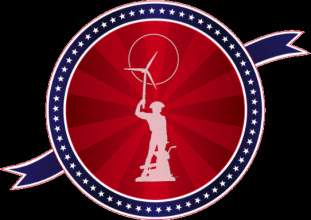But this interaction within the public school system is clearly not enough to enact the changes that we need in this area of public policy. We need hands on, experiential learning environments for our young people to develop the ideas that will lead us into a just sustainable future.
Working with secondary students in the areas of science and gifted education has allowed me to touch the future in many ways that are unseen during the years in which I share my classrooms and expertise. I suspect that many of my students have the potential to create ideas that can become the foundations for true sustainability. My former students Marla Marcum and Tory Pegram, among others, have confirmed my suspicions.
Now that the magnitude of our environmental degradation and the lack of just sustainability everywhere is rapidly demanding action, I envision many youth conservation and justice leadership projects that bring together diverse, bright, young people from all over the world to help them acquire in-depth awareness of social and environmental issues, and more importantly, the leadership skills necessary to infuse our society with just democratic principles and sustainable conservation practices.
Knowledge, awareness, critical thinking skills, and effective leadership among our very brightest will unleash a myriad of possible solutions to our current and future challenges. This knowledge, awareness, critical thinking skills, and effective grass roots leadership training instilled in innovative "leadership academies" will ensure that young people will return to their communities as committed citizens, engaging in the areas of just environmental public policy, alternative energy sources, climate change, habitat preservation/restoration projects, poverty, injustice, water and land use challenges, and many other related issues.
I am the Director of one such prototype model of a community-based, service learning, mentor-backed habitat restoration project called the Green Leadership Academy for Diverse Ecosystems. This residential project is funded by a grant from the TogetherGreen Program, a National Audubon Society project funded by Toyota Motors with additional funding from the Greater Ozarks Audubon, Missouri State University, and the Community Foundation of the Ozarks. It recruits 16 bio-regionally based high ability students each year to participate in an effort to increase biodiversity by restoring habitat that once supported two of Missouri's endangered species, Swainson's Warbler and Bachman's Sparrow. It's most compelling mission, however, is to develop within these young people the desire to lead, and to take an active role in sustaining and creating diverse habitat and responsible stewardship in this beautiful place called the Ozarks.
In the coming year, I will be engaging in an effort to put in writing the key components that I see as necessary in order to develop community-based conservation leaders. Although my writings may seem random and repetitive here at Conservation Conversations, I hope that ultimately I can distill this raw material into an informative guide for planners, educators, and conservationists interested in the future of leadership development.


No comments:
Post a Comment